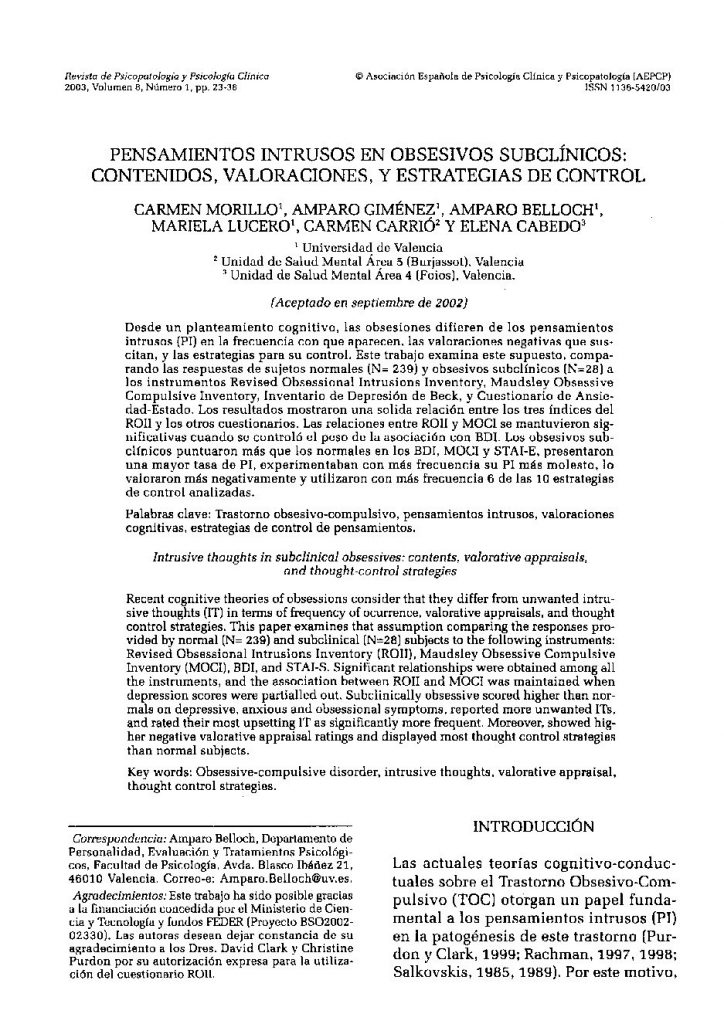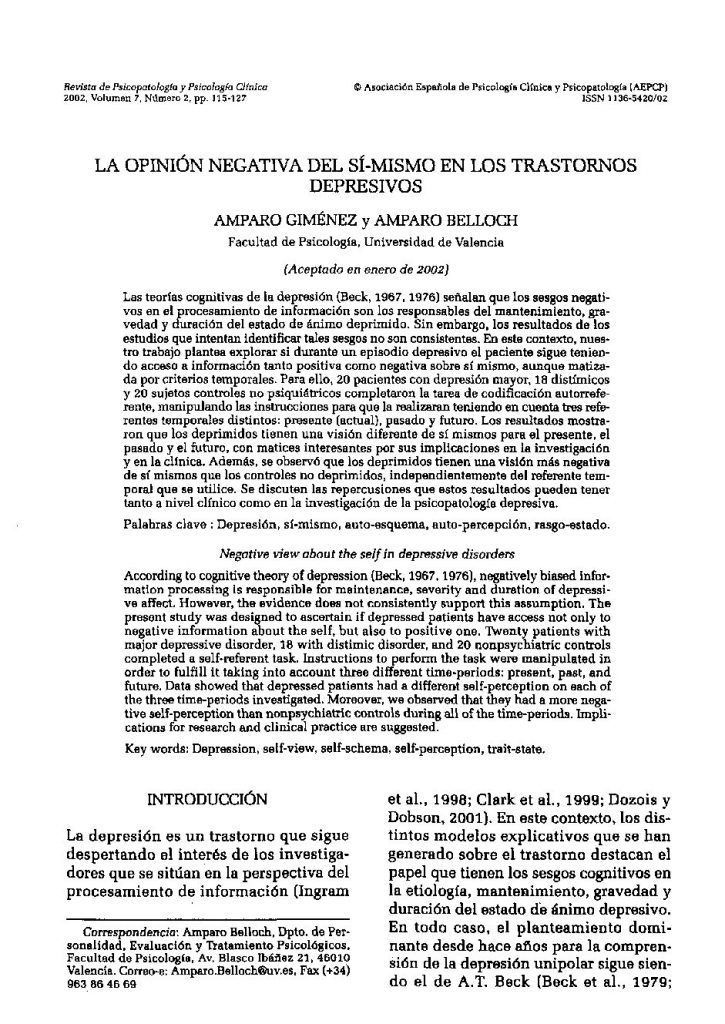Creencias disfuncionales asociadas a síntomas obsesivo-compulsivos: una aproximación a la especificidad.
- Creencias disfuncionales asociadas a síntomas obsesivo-compulsivos: una aproximación a la especificidad.
- Parámetros subjetivos de sueño y estado de ánimo disfórico.
- El conflicto de pareja como variable asociada a la violencia de género contra la mujer: consecuencias sobre la salud sexual y mental.
- Alberto Espino y Begoña Olabarría (Coords.)(2003): La formación de los profesionales de la salud mental en España. Estado actual y perspectivas. Madrid: Asociación Española de Neuropsiquiatría.
- Dimensiones de la sensibilidad a la ansiedad: evidencia confirmatoria de la estructura jerárquica.
The current cognitive theories to Obsessive-Compulsive Disorder (OCD) emphasize the importance of beliefs and appraisals about the obsessive thoughts in the etiology and maintenance of the disorder. However, the specificity of these beliefs to OCD it remains unclear. In this paper the specificity of dysfunctional beliefs OCD-related are examined in 151 normal subjects and 28 subclinically obsessives. All subjects completed the Obsessive Beliefs Inventory (OBI) and instruments to assess OCD symptoms (Padua Inventory-Revised), depression (BDI and ATQ), and anxiety symptoms and worries (STAI-S and PSWQ). The results show that: (a) the moral thought-action fusion beliefs were the only that showed to be specifically related to OCD when compared to depression, but not when anxiety was the measure to be compared with; (b) the beliefs on perfectionism, intolerance to uncertainty (IU), responsibility (R), overestimation of danger (OD), importance of thought control, and rigidity, remained significantly related to OCD when the load of depressive and anxiety scores were controlled; (c) the OD beliefs were the most predictive to obsessive symptoms; (d) the OCD aggression subtype was best predicted by the thought-action fusion beliefs in subclinically obsessive and by the OD, R, and IU beliefs in normal subjects.
La conceptuación cognitiva del trastorno obsesivo-compulsivo (TOC) otorga un papel nuclear a la asunción de creencias disfuncionales, si bien no hay evidencias inequívocas acerca de su especificidad. Este trabajo examina, en 151 sujetos normales y 28 personas con TOC subclínico, si tales creencias son específicas del TOC, es decir, se relacionan con síntomas obsesivos pero no con depresivos ni ansiosos, y si se asocian de manera diferencial a distintas modalidades de TOC. Todos los sujetos cumplimentaron el Inventario de Creencias Obsesivas, junto con cuestionarios de TOC (PI-WSUR), depresión (BDI, ATQ), y ansiedad (STAI-E, PSWQ). Los resultados obtenidos fueron: a) las creencias sobre Fusión pensamiento-acción (FPA) de tipo moral fueron las únicas específicas en relación con las medidas de depresión, pero no con las de ansiedad; b) las creencias sobre Perfeccionismo e intolerancia a la incertidumbre, Responsabilidad e Importancia de controlar (R-IC), Sobrestimación del peligro (SP), y Rigidez, fueron las más consistentemente asociadas a obsesividad, una vez controlado el peso de depresión y ansiedad; c) la dimensión de SP fue la que mayor capacidad mostró para predecir distintos contenidos obsesivos; d) los contenidos obsesivos de agresión fueron predichos por las creencias FPA y SP en obsesivos subclínicos, y por SP y R-IC en normales.





